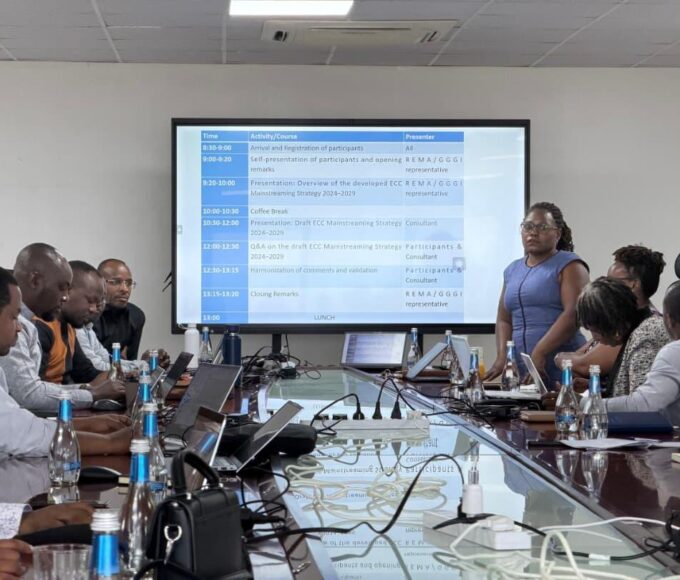Echoes of Resilience: The Transformative Power of Visiting Genocide Memorials

Visiting genocide memorials evokes a complex mix of emotions, often including fear and apprehension. I experienced this firsthand during my visit to the Genocide Memorials in Ntarama and Nyamata in 2012. Despite my preparation, I was overwhelmed, unable to complete the visit. Crying uncontrollably, I struggled to regain my composure. However, this experience ignited a change within me. The fear that once hindered my willingness to confront such a harrowing history began to dissipate. While the prospect of visiting some memorials still fills me with dread, I recognize the necessity of confronting these sites someday. They are not just places of sorrow; they are spaces for remembrance, reflection, and awakening.
The 1994 Genocide Against the Tutsi was a horrific mass atrocity that unfolded in Rwanda over approximately 100 days, from April to July 1994. This tragic event was rooted in longstanding ethnic tensions between the Hutu and Tutsi populations. The immediate catalyst for the genocide was the assassination of Rwandan President Juvénal Habyarimana, a Hutu, when his plane was shot down on April 6, 1994. This event ignited a coordinated campaign of violence against the Tutsi population, a plan set in motion by extremist Hutu groups. Over the course of the genocide, approximately one million Tutsi and moderate Hutus were brutally killed, many subjected to horrific acts of violence, including rape and torture. The international community largely failed to intervene, despite clear signs of the impending slaughter.
The genocide concluded when the Tutsi-led Rwandan Patriotic Front (RPF) seized control of the country in July 1994. The genocide has left lasting scars on Rwandan society and politics, remaining a critical chapter in discussions about human rights and genocide prevention.
Commemoration and Reflection

Rwandans commemorate the 1994 Genocide Against the Tutsi through a period of remembrance known as the “100 Days of Remembrance,” which takes place annually from April 7 to July 4. This period marks the timeline of the genocide, beginning with the first day of the killings and concluding with the RPF’s victory. It starts with a commemoration week from April 7 to April 13. Various activities occur throughout the country to honor victims and reflect on the genocide’s impact. Events include memorial services, candlelight vigils, public discussions, and educational programs aimed at raising awareness and promoting unity among Rwandans.
Special emphasis is placed on significant anniversaries, such as the 10th, 20th, or 30th, which typically feature larger commemorative events and broader participation from the global community. These activities honor those who lost their lives while fostering national healing, promoting human rights, and ensuring that such atrocities are never repeated.
Reflecting on my experience, I realize how transformative such visits can be. In moments of deep reflection amidst the eerie silence of the memorials, I confronted the harsh truth about human nature—its capacity for both cruelty and resilience. As I wandered through areas where pain and suffering lingered, I began to see these memorials as symbols of strength and perseverance. They serve as reminders that while humanity can engage in terrible acts, it can also rise from the ashes, united in a collective pursuit of peace and healing.

The memorials encourage visitors to engage in a shared experience of remembering. Each personal account contributes to the overall tapestry of experiences, weaving together the fabric of a nation’s history. Hearing survivors recount their experiences sheds light on the indomitable human spirit—stories of resilience, optimism, and the unwavering pursuit of justice. Reflecting on past traumas is essential, not only for recognizing wrongdoings but also for ensuring that the lessons learned are passed down to future generations.
Rwanda is home to several genocide memorials and sites, each with its unique story and significance. Some are now part of UNESCO World Heritage sites (Gisozi, Nyamata, Bisesero, and Murambi). These sites are accessible to the public, and while some benefit from guided tours, others offer self-guided options. Information about these places is often available online and at the sites themselves, providing valuable context for visitors.
Numerous memorial sites throughout Rwanda honor genocide victims and educate visitors about the events that transpired. Notable memorials include:
1. Kigali Genocide Memorial (Gisozi): Located in the capital, this prominent site includes a museum offering extensive information about the genocide, personal stories of victims, and the historical context leading up to the events. It serves as a burial site for over 250,000 victims.
2. Ntarama Genocide Memorial: Housed in a former church near Kigali, this site showcases personal belongings of victims and recounts the events that occurred there.
3. Nyamata Genocide Memorial: Similar to Ntarama, this site was once a church where many were killed and contains exhibits that provide insight into the genocide.
4. Murambi Genocide Memorial: Located in southern Rwanda, this site of mass killings includes preserved bodies and personal artifacts to educate visitors about the horrors of the genocide.
5. Bisesero Genocide Memorial: Known for its resistance during the genocide, Bisesero features multiple memorial sites that highlight the struggle and tragedy experienced there.
It is vital for every Rwandan, regardless of their origin or the era in which they were born, to visit these memorials. Understanding what transpired in our country is crucial for ensuring that such atrocities are never repeated. For non-Rwandans, visiting these memorials carries equal significance. It aids in comprehending the immense pain, resilience, and history of the Rwandan people, fostering meaningful interactions and deeper connections. Such understanding can be a vital tool in preventing similar tragedies, underscoring our shared human responsibility to remember and learn.
Etiquette for Visiting Genocide Memorials

While visiting these solemn sites, it is crucial to observe certain etiquettes that demonstrate respect for the victims and survivors. These guidelines honor the memory of the deceased and promote a reflective atmosphere for all visitors:
1. Dress Appropriately: Opt for conservative attire when visiting memorials. The memory of those who perished calls for modest clothing.
2. Maintain Silence: Speak softly and be mindful of your voice level. Many visitors come to reflect, and maintaining silence fosters an environment conducive to contemplation.
3. Be Respectful: Show reverence while exploring the memorials. Avoid disruptive behavior, and treat the exhibits with care, as they hold deep significance.
4. Listen and Learn: If part of a guided tour, actively listen and refrain from interrupting. Show appreciation for the knowledge being shared by guides and survivors.
5. Avoid Taking Selfies or Unnecessary Photos: Resist the urge to take selfies or casual photos in sensitive areas, as such actions can detract from the solemnity of the site.
6. Offer Support: If you encounter survivors or community members, approach with kindness and be considerate of their experiences. Simple gestures of empathy can go a long way.
7. Engage with Intention: Take time to reflect on what you have learned and how it impacts your understanding of humanity, conflict, and resilience.
The Journey to Healing
Visiting the genocide memorials of the Tutsi genocide in Rwanda represents more than an act of remembrance; it is an essential process of understanding, connection, and healing. These visits foster a deeper appreciation of Rwandan history while embodying the resilience of a nation determined never to forget its past. Whether you are Rwandan or a visitor from abroad, engaging with these memorials paves the way for valuable insights into the complexity of the human condition, promoting empathy and strengthening our collective resolve to prevent similar tragedies.
As I confront my ongoing fears regarding these memorials, I am reminded that healing begins with understanding, and that understanding is possible only through remembrance. Each visit symbolizes a step toward healing not just for the individual, but also for a nation that continues to rebuild and remember. Through collective memory, Rwanda invites the world to join in the pursuit of peace, hope, and a shared commitment to ensuring that history does not repeat itself. By visiting these memorials, we honor those who suffered and reaffirm our belief in a future where understanding, empathy, and solidarity triumph over hatred.

Trending Now
Hot Topics
Related Articles
Worm Tea: A Natural Path to Farming Without Harmful Chemicals
For much of his early farming life, Isaac Mubashankwaya believed chemical fertilizers...
Enroll Now Before 31 December 2025: International German Language Exams Launch in Rwanda
Rwanda will host the European Consortium for the Certificate of Attainment in...
Rwanda Validates Environment and Climate Change Mainstreaming Strategy 2024–2029
This Tuesday, 23 December 2025, the Rwanda Environment Management Authority (REMA), in...
Rwanda Opens New Doors with International German Language Certification
Rwanda has taken a significant step in expanding access to global education...














Leave a comment